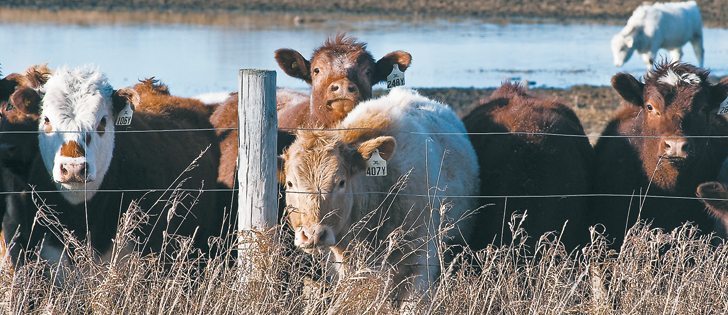SAN ANTONIO, Texas —Heifer selection has historically been based on visual characteristics such as structural soundness and femininity.
However, visual selection does not always reveal which animals are the most fertile or produce the best calves, said Mike Amos of the livestock pharmaceutical firm Zoetis.
He and Zoetis geneticist Kent Anderson recently attended the National Cattlemen’s Beef Association convention in San Antonio, where they described a new genomics tool for picking out the best young commercial females.
“Often the eyeball can’t tell us things about the unseen world that really impact profit,” Anderson told reporters during the convention.
Read Also

Breaking down successful winter feeding into six steps
It’s that time of year when it is important to start planning for a cow herd’s winter feeding program. Here are six steps I think are necessary to consider when getting your feed tested.
Many valuable production traits are highly heritable, so a 50K panel DNA test has been developed to help select the animals that are most likely to be fertile, gain weight and produce tender meat.
The panel evolved out of work Zoetis has done with the American Angus Association to develop DNA panels to test purebred cattle.
Twenty percent of registered cattle in the United States have been DNA tested, but until recently not much has been available for commercial operators, said Amos.
Commercial producers in 30 states have tried the Gene Max Advantage program to help improve heifer selection and breeding decisions.
The test works best on females with at least 75 percent Angus bloodlines. Genetic predictions are more variable for animals below that threshold.
The North American cow herd shrank in recent years, but U.S. statistics show that remarkable heifer retention is now underway. Testing could select the best commercial females, which could then be bred to high performing bulls. The result should be better offspring.
The heifers can be tested at an early age when they are being evaluated for soundness.
Ear tags from All Flex can be used to take a core sample from the ear to provide DNA and when the sample is submitted for testing.
The test offers three categories:
- Parentage verification can help producers manage inbreeding that affects fertility and fitness traits.
- Advantage indexes rank the females for net profit. They can make assumptions about feedlot traits such as gain and carcass grade. An index system includes scores from one to 100 with 50 being average based on a 15,000 head reference population. The scores can make assumptions on potential profit of the individual cow and its calves. Information can also be adjusted according to the farm environment, taking into account things such as climate and forage quality.
- A smart outlier allows producers to flag animals that are more likely to be docile and produce better beef that is well marbled and tender. It can also select animals that are not expected to perform well.
Test results have shown considerable variation within individual herds.
Contact barbara.duckworth@producer.com
















